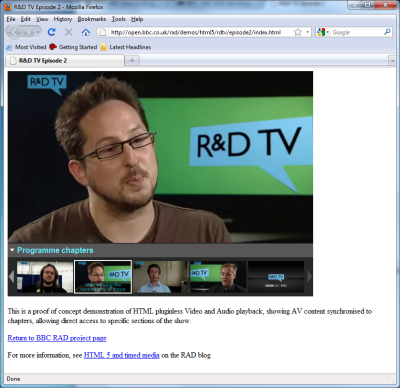In May I attended a Yahoo Hack Day in London and wrote it up for the Reg. Although I found the business story unconvincing, I was impressed by the technology – things like BOSS, SearchMonkey, and especially YQL (Yahoo Query Language), which lets you treat the entire Internet as a structured database.
One thing all these services have in common is that they are search-related. If the Microsoft-Yahoo deal goes ahead, responsibility for Yahoo’s search engine moves to Microsoft. My high-level understanding is that Bing becomes the search engine, with some Yahoo engineers possibly moving to Microsoft, and others being let go.
There are big implications for Yahoo and the developers which depend on its services. Here’s the official statement quoted by Ashim Chhabra on the BOSS team:
This is the beginning of a process and we’ll be working with Microsoft to determine what makes the best sense for both us and developers. Regardless, we are certainly committed to continuing to innovate on the user experience of search all across Yahoo! and on continuing to engage with the developer community on several fronts, opening up leading audience experiences and data to third-party innovation. In that context, SearchMonkey can add a lot of value to how we help people get the most out of search and out of Yahoo!. Over the next several months we’ll determine what makes sense with our developer offerings and provide information when available.
though Chhabra adds:
Honestly the team is still absorbing the implications and we just don’t know. We can tell you that BOSS will remain live for the time being. There are many aspects still to be considered. Over the next several days we’ll be working hard to get clarity and will update the community as soon as we can.
A reasonable guess is that the APIs will continue to work – it is not usually that hard to map one set of APIs onto another – but that the focus of the development effort will change, and the actual results will be different when based on the new engine.
Bing’s engine is not bad, as one developer observes:
Do not take me wrong, have been using the Bing API since 2.0 and find it very similar to BOSS for integration purposes and results are good, but I guess my point is that Yahoo! Search Technology is pretty much dead from my understanding and hence the "real" BOSS is dead too.
There is another problem though, which is that the Yahoo culture, which draws on open source (Yahoo runs largely on PHP), is different from that of Microsoft. Some developers who use Yahoo APIs will likely feel uncomfortable with moving to Microsoft’s Live platform – prompting comments like this one:
Don’t use Bing please please please please please
Such folk may well find Google more congenial. Google’s search engine is far from open source, but the company supports a large amount of open source code (not least its web browser, Chrome/Chromium) and has been more successful than Microsoft in engaging with the open source community.
Although I suspect Yahoo gets little direct revenue from its developers, they are a dangerous group to disrupt, because of the influence they wield. If the Yahoo platform loses momentum, it is likely to impact its other initiatives as well.
Update:
See also this announcement:
For SearchMonkey and BOSS, we currently do not have anything concrete to tell you. Clearly, we’ll need to work with Microsoft to determine what makes the most sense for you and for us. For more details, please see Ashim Chhabra’s post to developers on the Yahoo! Search BOSS group. We’ve also received questions about the future of Yahoo!’s other developer offerings, such as YUI, YQL , and Pipes. We wanted to let you know that today’s news does not affect these products.
